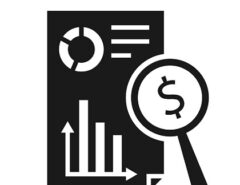It should set aside the fiscal deficit for now, while raising revenue through wealth tax and monetising idle PSU assets
An annual budget is a short-term instrument with a longer-term perspective. Rapid inclusive growth is a widely acceptable goal. The immediate challenges for Budget 2021-22 are those that the pandemic has caused to the economy, leading to massive income and job loss.
The National Statistical Office estimates (advance) that the GDP is likely to contract by minus 7.7 per cent in real terms for 2020-21 to ₹134.40 lakh crore, as against the Provisional Estimate of GDP of ₹145.66 lakh crore for 2019-20.
According to CMIE, 121 million people lost jobs during the months of lockdown. Subsequently, the labour market witnessed some recovery. Around 38.7 million were unemployed in December 2020 as against 18 million in the pre-Covid period. The unemployment rate stood at 9.1 per cent in December, the highest since June this year. Such massive unemployment has led to demand deficiency in the economy.
Supply-side bias
The government announced the ₹29.88-lakh-crore Atmanirbhar Bharat package between during May and November 2020 in several tranches to provide some cushion.
The economic package focusses upon accelerating second generation reforms in terms of factor market reforms, structural reforms in the core sectors, agriculture sector reforms, regulatory reforms, and greater emphasis on privatisation. The more recent measures include additional public investment and support schemes targeting certain sectors. The latter includes a Production Linked Incentive (PLI) scheme targeting 13 priority sectors.
The stimulus package introduced has failed to create a big impact since its thrust is on the supply-side measures while the immediate challenge is to restore the effective demand in the economy. With the aggregate level net spending by the Government not having increased significantly, the demand inadequacy remains a binding constraint on growth, even if the supply side measures have a positive impact in the longer term.
One of the major challenges of the Government in the coming financial year is to make up the huge revenue loss while at the same time generating broad based and sustained effective demand by way of restoring the millions of jobs lost during the pandemic year.
The Government had created a roadmap for achieving fiscal deficit target of 3 per cent of GDP. This is aimed at getting a good rating from the international rating agencies. Even with improved tax collections in recent months, India’s fiscal deficit is likely to breach the level of 8- 9 per cent of GDP in the current financial year. Yet, given the nature of constraints currently facing the economy, it would not be prudent for the Government to focus on fiscal consolidation. It should rather focus on demand stimulus and improving ease of doing business.
Larger spending under schemes like PM Garib Kalyan Rojgar Yogana and MGNREGA with enhanced coverage in rural and urban areas would improve the job situation in the informal sectors. Workers engaged in such schemes should be paid by expense voucher so that the earned income is spent on essential goods from markets.
Apart from direct transfer of money to the people who have lost their jobs, larger spending of resources for health, training and education and other social sectors which are labour intensive would not only improve human capital but also much needed demand stimulus. Similarly, quality spending on infrastructure projects will help to generate labour demand as it has higher employment elasticity and thus would unlock demand for goods and services.
Revenue options
Where does the Government get revenue to fund such expenditures?
In this regard, a Covid-19 cess on certain items is being discussed as a possible source of additional revenue. A Covid-19 cess could augment the revenue of the Central government while State governments have to bear the major brunt of fighting the pandemic and incur heavy expenditure. In any case, there are already a huge number of cess and surcharges imposed by Central government that have squeezed the States’ divisible pool.
One of the more realistic sources for revenue garnering is the huge unrealised tax arrears. The total amount of unrealised tax revenue at the end of financial year 2018-19 was ₹11.09 lakh crore (Union Budget 2020-21). Out of this, ₹1.53 lakh crore, that is, 13.8 per cent of the unrealised tax revenue are not under any dispute.
Another source could be huge assets such as land lying idle with departments like Railways, Defence Telecommunications, and public sector entities. These could be monetised for raising resources. Highly skewed income and wealth distribution presumably made worse during the pandemic period makes a good case for reintroducing a properly designed wealth tax.c
Given the positive experience of Aadhaar number-based Direct Benefit Transfer, IT/AI based system can be explored to target the entire subsidy of ₹2.63 lakh crore on food, fertiliser, and petroleum (2020-21). After all, money saved is the money earned.
It is also possible to make government expenditure more effective by eliminating wasteful expenditure the spread of which is considerable.

Leave a Reply